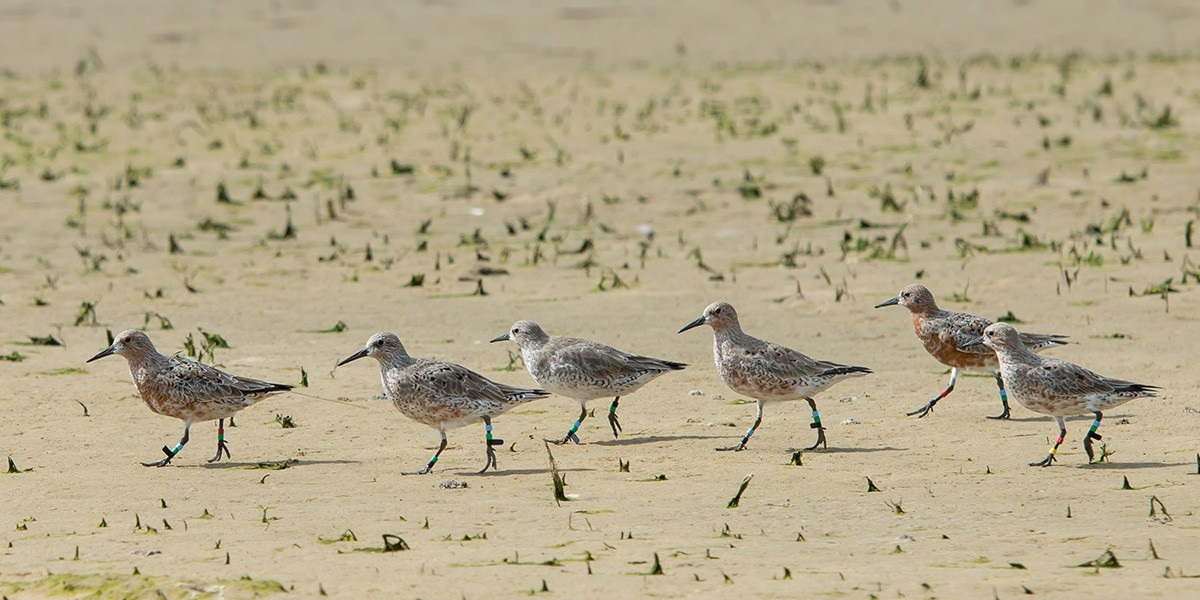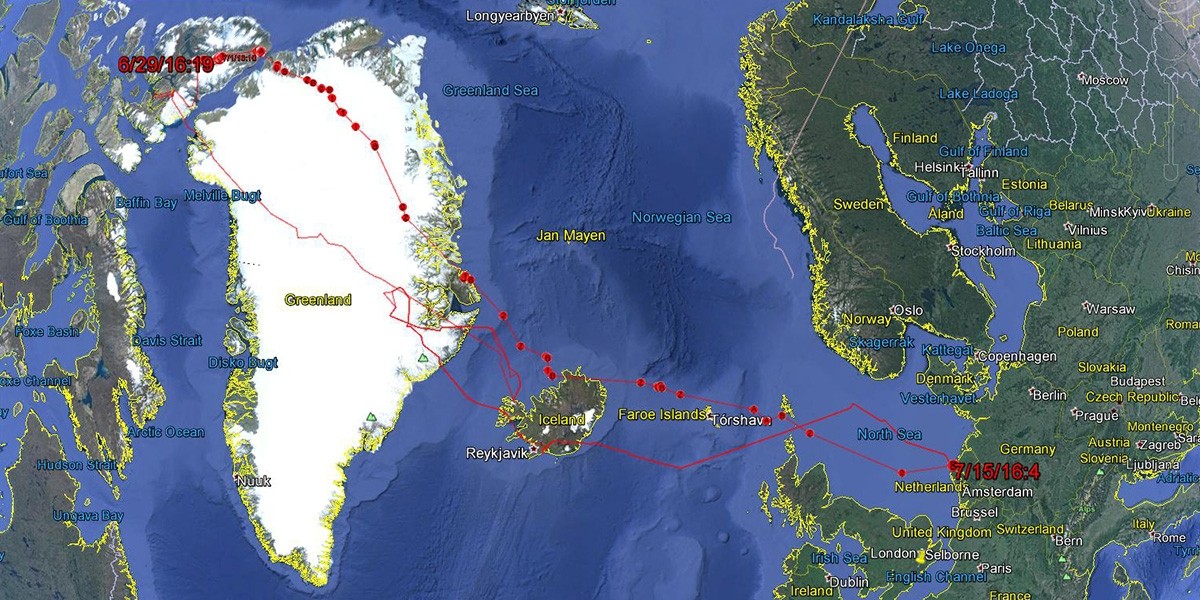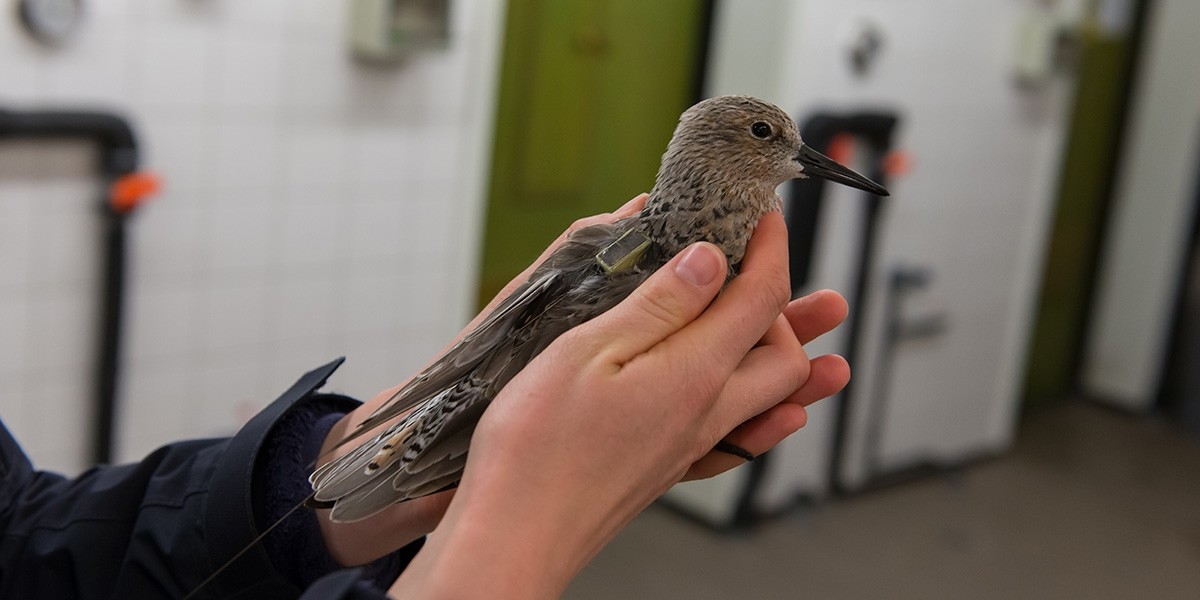From Canadian breeding grounds to Dutch Wadden Sea
From Canadian breeding grounds to Dutch Wadden Sea
'Paula' is a red knot belonging to the subspecies Calidris canutus islandica. This subspecies breeds in the far northern part of Canada and it winters in the Wadden Sea. This is different from the Calidris canutus canutus subspecies of the red knot, which is also present in the Wadden Sea during spring and autumn migration but breeds in Siberia and winters along the West-African Coast.
Ultra-light solar satellite tag
As part of a trial study, the red knot was caught in April on the Dutch mudflats and equipped with a prototype satellite transmitter. Kok: 'Because this transmitter weighs only two grams, an average knot of 120 gram can easily carry it. And because this transmitter contains a very small but also very powerful solar panel, the battery is constantly charged in the Arctic summer. Consequently, the satellites were able to generate a lot of high quality position data.'
Exploring
In April the researchers first tested how the bird reacted to wearing the transmitter in captivity. Subsequently the bird was released on Texel. 'The bird immediately flew to the small island of Griend, 30 km away from Texel, the place where she had been caught two weeks before', according to Kok. 'In mid-May, Paula left the Wadden Sea and flew over sea and in a straight line to Iceland in a single day. Then, after a remarkable exploratory flight crossing the Greenland inland Icecap, she returned to Iceland only to depart again a few days later on another non-stop flight to the breeding grounds near Ellesmere Island, in the far northeast of Canada. This is the northernmost land on Earth.'
Breeding attempt
After arriving at the breeding grounds, the location fixes of the satellite transmitter did not move for almost three weeks. 'Thus we concluded that the bird had started breeding. However, after 18 sedentary days, Paula started to fly long distances again. We are afraid that her eggs didn’t hatch because 18 days is just a little too short to complete a brood successfully', according to Kok.
Refueling on the tundra and straight back to the Wadden Sea
In the two weeks following the breeding attempt, Paula presumably built up energy stores in the form of fat before she departed on the incredible flight ‘home’. In one non-stop flight of 60 hours she flew back to the Wadden Sea. On her way south she did not even seem to consider to stop at the highly suitable foraging grounds along the coast of Iceland, where we thought until recently that all islandica knots made a refueling stop.
Confirmed hypothesis
'By means of Paula’s incredible high quality track, we confirmed a couple of conjectures about red knot migration', says Kok. 'Based on radar observations on Greenland, and resightings of color ringed birds, we had quite a good idea about the migratory routines of red knots between the Wadden Sea and their breeding grounds in northeastern Canada. But this bird carrying the satellite transmitter clearly confirmed and visualized our ideas based on indirect observations and interpretations'. Kok and colleagues know now that islandica knots that winter in the Wadden Sea indeed breed on Ellesmere Island and can refuel on the dry tundra, and not along the coast. And on the way back they are capable of a non-stop flight from the northernmost place on earth to the Wadden Sea without stopping on Iceland or Norway.
Traces in blood
By means of a blood test the biologist from Texel earlier discovered indirectly that some knots on their flight from Canada to the Wadden Sea don’t stop in Iceland. According to Kok: 'The origin of the food that the birds eat leaves traces in their blood. Earlier work using stable isotope analysis indicated that a part of the population did refuel on Iceland, while another part didn’t.'
State-of-the-art
Knot Paula was named after Paul Howey, founder of the firm Microwave Telemetry, Inc. Columbia, Maryland. Howey personally designed the two gram Argos 3 satellite transmitter, just as he designed earlier the now ‘common’ satellite transmitters.
More information
Scientific contact persons:
Eva Kok, Theunis Piersma
Communication contact:
Jan Boon (also for pictures in high resolution)


